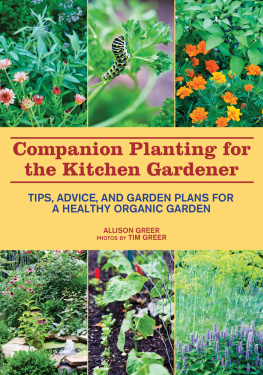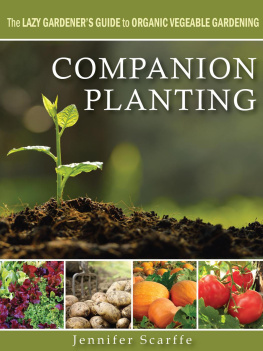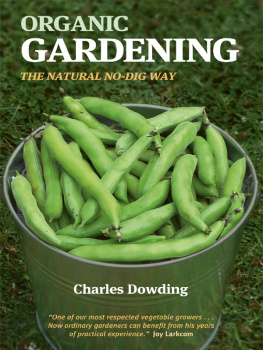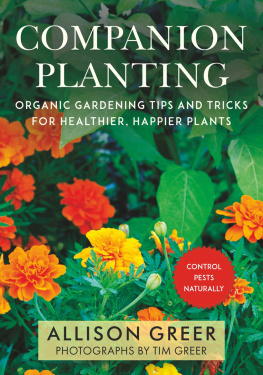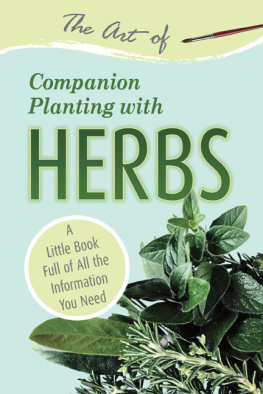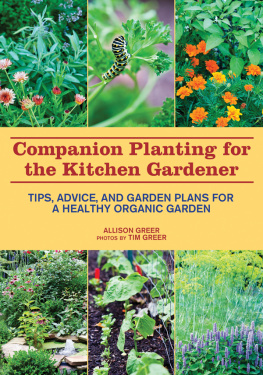
Copyright 2014 by Allison Greer
Photos copyright 2014 by Tim Greer
All rights reserved. No part of this book may be reproduced in any manner without the express written consent of the publisher, except in the case of brief excerpts in critical reviews or articles. All inquiries should be addressed to Skyhorse Publishing, 307 West 36th Street, 11th Floor, New York, NY 10018.
Skyhorse Publishing books may be purchased in bulk at special discounts for sales promotion, corporate gifts, fund-raising, or educational purposes. Special editions can also be created to specifications. For details, contact the Special Sales Department, Skyhorse Publishing, 307 West 36th Street, 11th Floor, New York, NY 10018 or .
Skyhorse and Skyhorse Publishing are registered trademarks of Skyhorse Publishing, Inc., a Delaware corporation.
Visit our website at www.skyhorsepublishing.com.
10 9 8 7 6 5 4 3 2 1
Library of Congress Cataloging-in-Publication Data
Greer, Allison.
Companion planting for the kitchen gardener : tips, advice, and garden plans for a healthy organic garden / Allison Greer ; photos by Tim Greer.
pages cm
Other title: Tips, advice, and garden plans for a healthy organic garden
ISBN 978-1-62914-171-8 (alk. paper)
1. Companion planting. 2. Organic gardening. 3. Kitchen gardens. I. Greer, Timothy. II. Title. III. Title: Tips, advice, and garden plans for a healthy organic garden.
SB453.6.G74 2014
635.0484--dc23
2014003655
EISBN: 978-1-62914-259-3
Cover design by Owen Corrigan
Printed in China

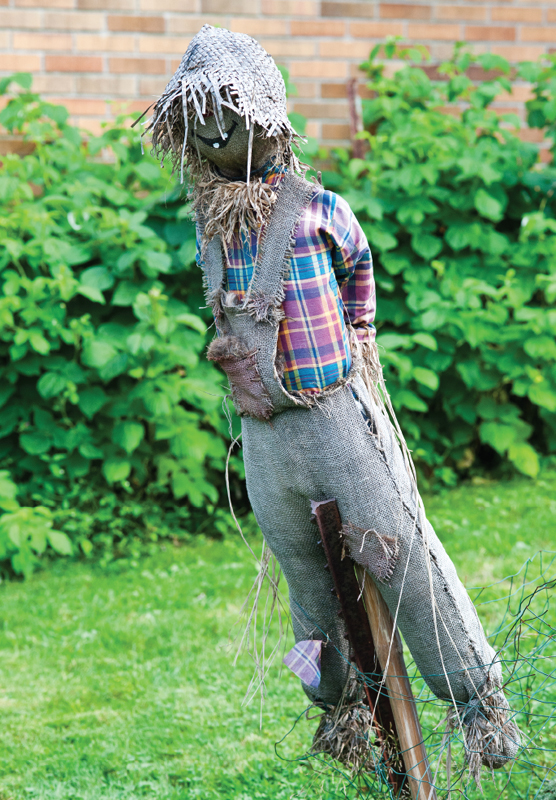
CONTENTS
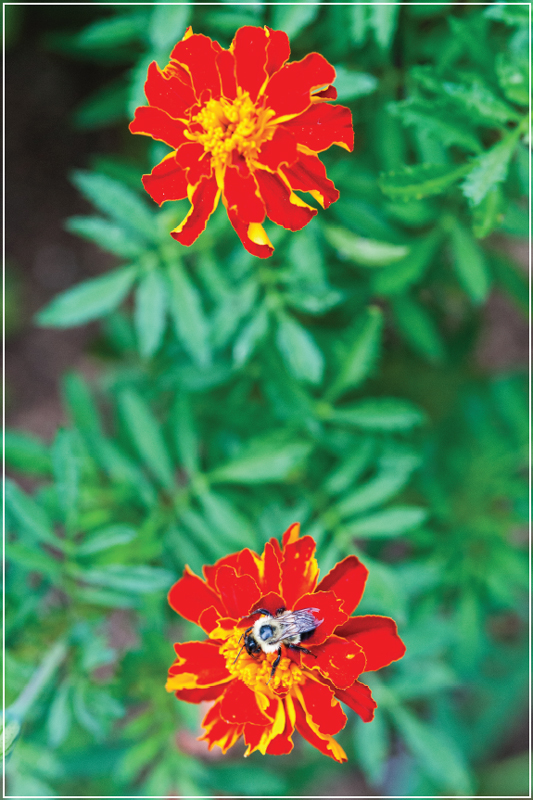
This book is dedicated to my husband, Tim. He has encouraged my gardening habit from the beginning and was always at the ready for any project I suggested. During the writing of this book, I was supplied with warm dinners, clean clothes, and endless encouragement.
Thank You.

ACKNOWLEDGMENTS
M y editor, Abigail Gehring, who had the foresight to envision this book, and who believed in my ability to write its words.
The following gardeners, farmers, family and friends who allowed us to stop by their gardens for photos. We talked about gardens and gardening, swapped ideas, and shared in our excitement for the natural world.
Susan Cerny & Adam Reed of Tangleroot Farm
Joe & Cathy Dello Stritto
Becky Gates
Bob & Ruth Greer
Chris & Aaren Harris of Wing Road Farm
Casey & Kelly Holzworth of Kelseys Quarter Acre Farm
Ralph, Susan, & Christopher Kaiser
Phipps Conservatory and Botanical Gardens
Erika Tebbens of Little Sparrow Farm
My mother, Jean Brew, who graciously loaned me her laptop for three months so I could finish writing.
Our garden helper, Kevin Brew, who helped us plant, trellis, and harvest during the 2013 season.
My father, Robert Brew, who built us a chicken run so the chickens would stop tearing up the garden.
My father-in-law, Robert Greer, whos spent the last 50 years cramming apple trees and plants into his kitchen garden, and who inspires us every time we visit.
Hassan Lopez. When I first discussed the possibility of this book, he told me that I just had to write it. I dont know if I would have otherwise.
Tatiana Zarnowski, who willingly read over and edited earlier drafts of my manuscripts, and offered excellent advice.
All my gardening friends in the online world whove stopped by my blog to share in my enthusiasm.
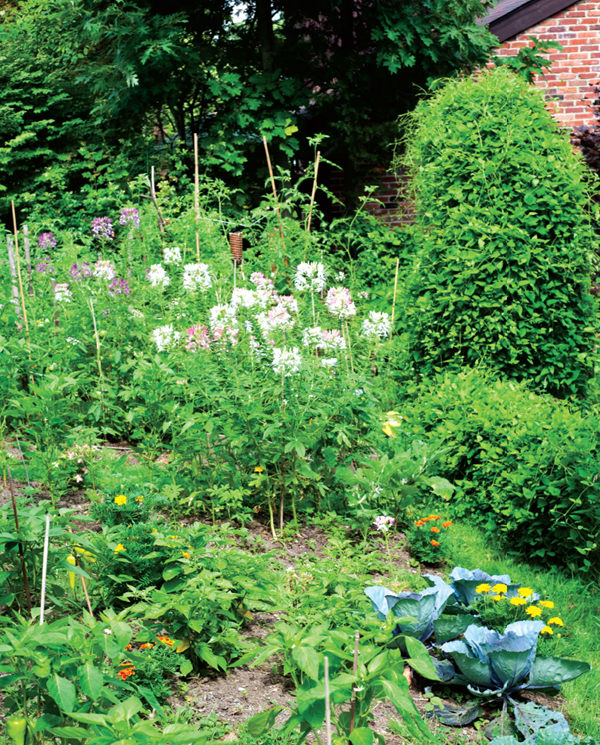
Chapter 1
AN INTRODUCTION TO COMPANION PLANTING
On Growing Things
D espite all the practicality of modern convenience, watching something edible grow still possesses a delicate magic that cant be replicated in the grocery store. Every time I talk to people about gardening, they either profess their love for growing things, or they see gardening as something beyond the realm of possibility. In all cases, people appear to recognize the majesty of a simple garden.
I designed this book for the kitchen gardener. A kitchen gardener is an individual who cultivates a garden to provide for his or her family and to enrich the family diet. The kitchen garden is so named because it is often situated near the house and can provide most of the familys vegetables and fruits.

I recognize that most of you who pick up this book may also work full time. Like the typical American, you probably work at a job that demands a good portion of your waking hours. Perhaps youve looked to gardening for some stress relief, or to economize; maybe youve turned to gardening to refocus your priorities. Maybe youve begun to reject the industrialized food system and are hoping to produce a wholesome, organic, homegrown alternative. Whatever the reason, my goal is to shape your understanding of gardening into a fulfilling yet manageable component of your daily lifea bit of daily magic.
On Companion Planting
My definition of companion planting is very basic, and perhaps more generic than the traditional understanding.
Companion Planting Plant many things. Mix them upplant herbs, vegetables, and flowers together. Watch them grow.
Theres more to discuss. I still have to tell you about soil, and bugs, and chemicals (never, ever, ever). Still, the definition Ive provided sums up my approach to gardening fairly well.
Creating an environment where flowers, edibles, and herbs all intermingle describes a version of companion planting that is approachable to newer gardeners, those who garden in tiny spaces, and those with room to spare.
If youve decided to grow an organic garden, companion planting offers a way for you to grow healthy and resilient plants without relying on harmful chemicals for their survival. Companion planting is ideal for kitchen gardeners, because all of your plants will be flung together in a beautiful configuration.
The companion planting techniques described in this book are based on the understanding that both above and below the surface of the soil, plants interact. It is clear that plants do not exist in nature in isolation. Every aspect of plant production is dependent on some level of cooperation with the surrounding plants, insects, and microbes in the soil.
Above the soils surface, it is undoubtedly observable that some flowers attract pollinators to the garden. Bee balm is a magnet for honeybees, an aromatic delight for their instinctive nectar and pollen collecting habit. While the honeybees may initially be drawn to the garden by bee balm flowers, theyll also visit the flowering blossoms of the tomato. Flowers may initially appear superfluous to the average vegetable farmer, but the presence of flowers attracts beneficial pollinators to the garden in general.

